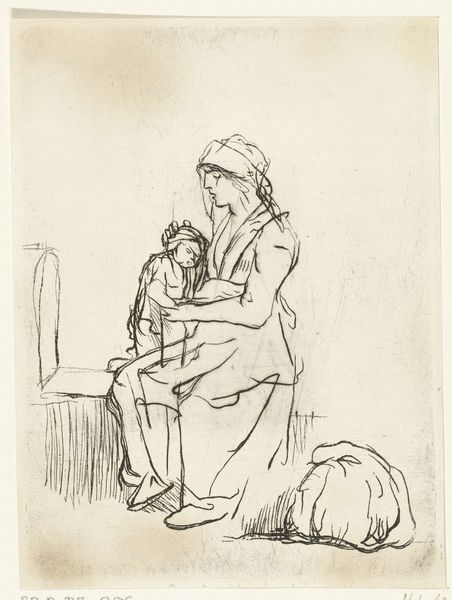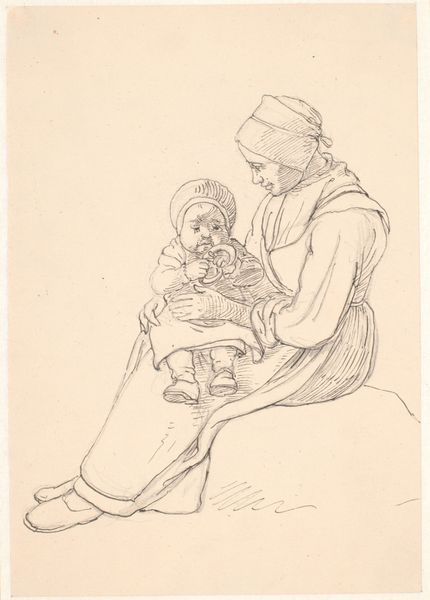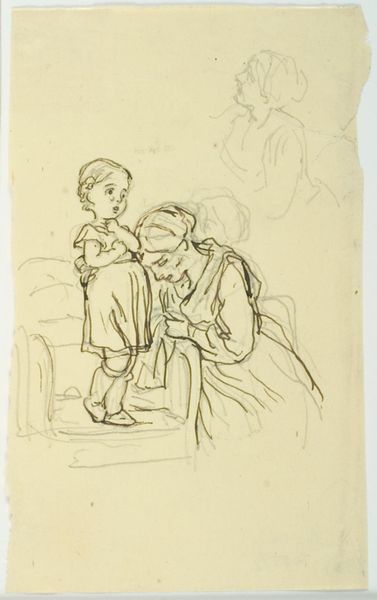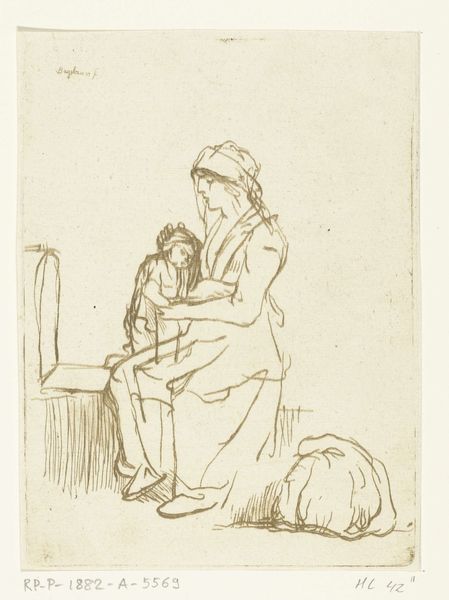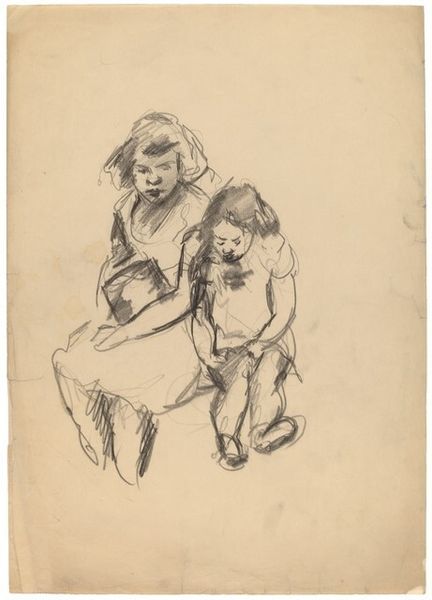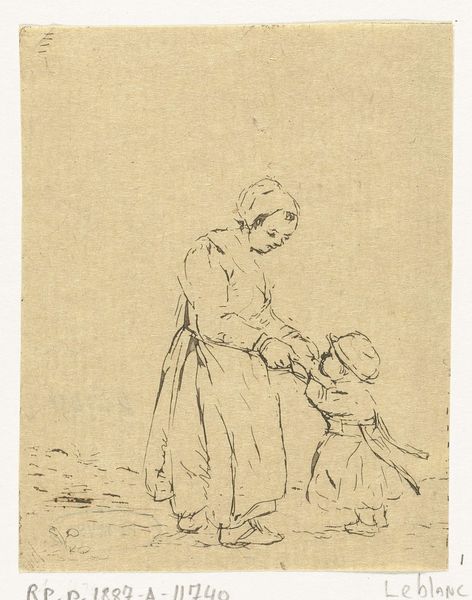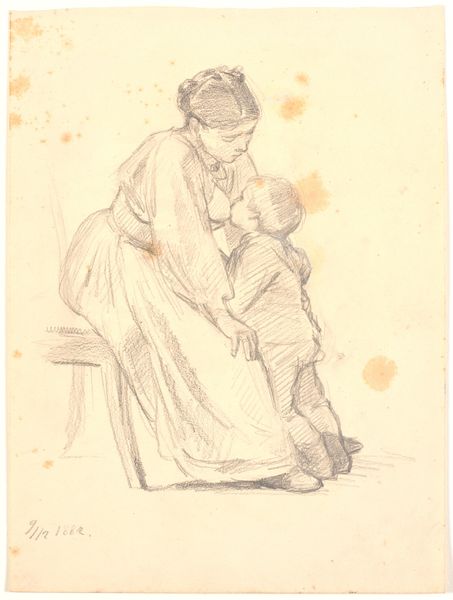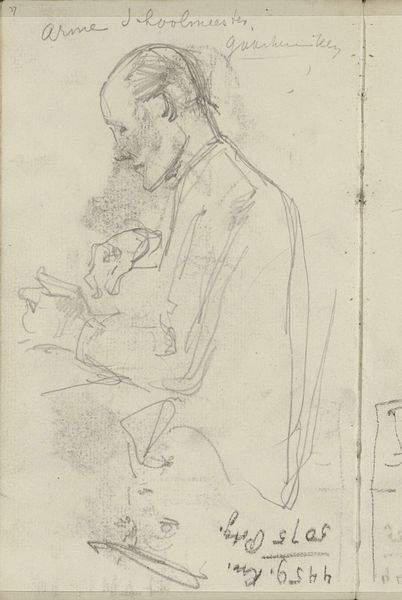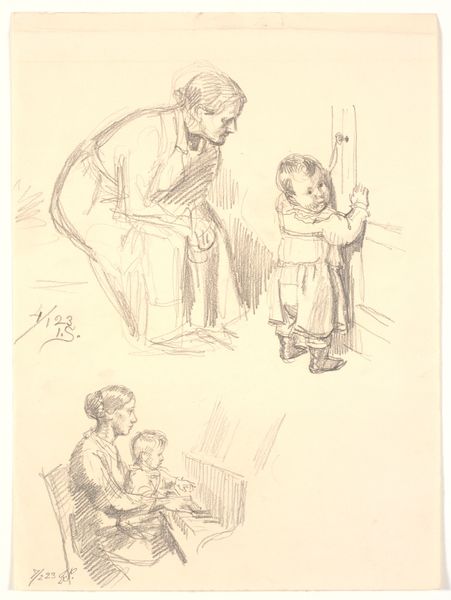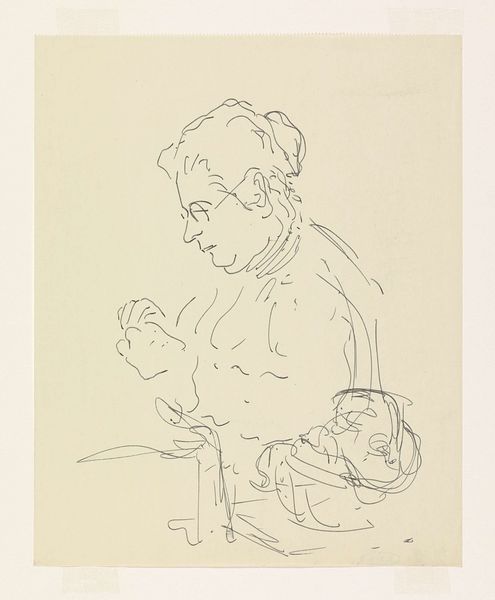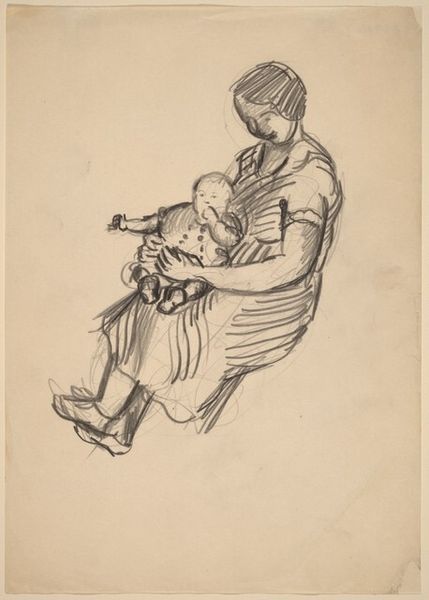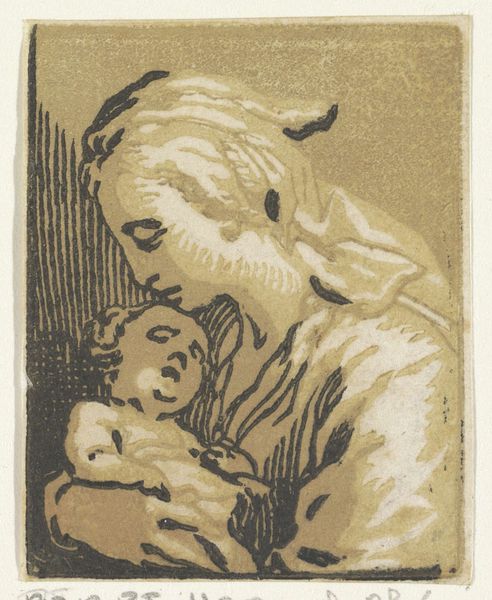
Dimensions: height 97 mm, width 49 mm
Copyright: Rijks Museum: Open Domain
Pieter de Mare created this print of a seated mother and child using etching, sometime in the late 18th century. The image appears as a delicate tracery of lines. This effect results from the artist’s chosen technique, which is rooted in the controlled corrosion of metal. De Mare would have coated a copper plate with wax, drawn his composition through it with a fine needle, and then submerged the plate in acid. The longer the acid bath, the deeper the lines. This kind of image-making was very much of its time, part of a burgeoning print culture that served the Enlightenment’s thirst for knowledge and images. The relative ease of the etching process, compared to say engraving, made it a favored method for artists wanting to circulate their ideas, and also tap into a growing market for affordable images. When we consider the work in this light, the image speaks not only of intimacy, but also of production, labor, and access.
Comments
No comments
Be the first to comment and join the conversation on the ultimate creative platform.
